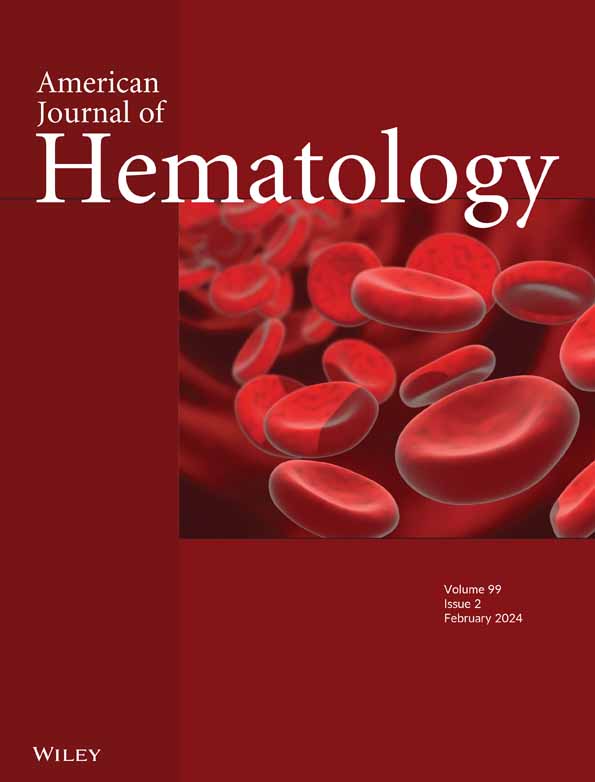TEG和ROTEM:技术与临床应用,2026年更新
IF 9.9
1区 医学
Q1 HEMATOLOGY
引用次数: 0
摘要
粘弹性测试(VET)自20世纪中期诞生以来,已经有了显著的发展,当时它首次被开发用于指导创伤和外科患者的输血策略。最初,像TEG和ROTEM这样的VET技术通过测量血液样本中针或活塞的机械阻力来评估血栓的形成。最近的进展已经引入了自动化的,基于盒的系统和新的检测方法-包括共振频率和基于超声的超声测量-这些新系统允许在护理点更精确,快速和用户友好的血块动态评估。VET现在被广泛应用于复杂凝血病的临床情况,包括创伤、心脏手术、肝移植、产科出血和血液系统疾病,如DIC。它的使用正在扩大到新的人群,包括小儿心脏手术患者、炎症性肠病患者和COVID - 19患者。然而,VET在可靠检测治疗性抗凝血剂和某些先天性出血性疾病(如血管性血友病、蛋白C、S和抗凝血酶缺乏)方面的能力仍然有限。技术限制,包括体外和体内凝块形成之间的潜在差异,以及缺乏FDA对儿科使用的批准,给对儿科VET感兴趣的中心施加了实施障碍。展望未来,VET数据与电子病历的整合、预测模型、人工智能的发展以及血小板功能评估和检测技术的不断创新,将增强VET的临床应用。随着指南和证据的不断发展,VET被定位为在不同患者群体中实时、个性化管理凝血病的越来越重要的工具。本文章由计算机程序翻译,如有差异,请以英文原文为准。
TEG and ROTEM: Technology and Clinical Applications, 2026 Update
Viscoelastic testing (VET) has evolved significantly since its inception in the mid‐20th century, when it was first developed to guide transfusion strategies in trauma and surgical patients. Initially, VET technologies such as TEG and ROTEM assessed clot formation by measuring the mechanical resistance of a pin or piston within a blood sample. Recent advances have introduced automated, cartridge‐based systems and novel detection methods—including resonance frequency and ultrasound‐based sonorheometry—these new systems allow for more precise, rapid, and user‐friendly assessment of clot dynamics at the point of care. VET is now indicated for a wide range of clinical scenarios where complex coagulopathy is anticipated, including trauma, cardiac surgery, liver transplantation, obstetric hemorrhage, and hematologic disorders such as DIC. Its use is expanding into new populations, including pediatric cardiac surgery, patients with inflammatory bowel disease, and those with COVID‐19. However, VET remains limited in its ability to reliably detect therapeutic anticoagulants and certain congenital bleeding disorders, such as von Willebrand disease and deficiencies of protein C, S, and antithrombin. Technical limitations, including potential discrepancies between in vitro and in vivo clot formation, and lack of FDA approval for pediatric use have imposed implementation barriers to centers interested in pediatric VET. Looking forward, the integration of VET data with electronic medical records, the development of predictive models, artificial intelligence, and continued innovation in platelet function assessment and detection technologies are poised to enhance the clinical utility of VET. As guidelines and evidence continue to evolve, VET is positioned to become an increasingly important tool for real‐time, individualized management of coagulopathy in diverse patient populations.
求助全文
通过发布文献求助,成功后即可免费获取论文全文。
去求助
来源期刊
CiteScore
15.70
自引率
3.90%
发文量
363
审稿时长
3-6 weeks
期刊介绍:
The American Journal of Hematology offers extensive coverage of experimental and clinical aspects of blood diseases in humans and animal models. The journal publishes original contributions in both non-malignant and malignant hematological diseases, encompassing clinical and basic studies in areas such as hemostasis, thrombosis, immunology, blood banking, and stem cell biology. Clinical translational reports highlighting innovative therapeutic approaches for the diagnosis and treatment of hematological diseases are actively encouraged.The American Journal of Hematology features regular original laboratory and clinical research articles, brief research reports, critical reviews, images in hematology, as well as letters and correspondence.

 求助内容:
求助内容: 应助结果提醒方式:
应助结果提醒方式:


